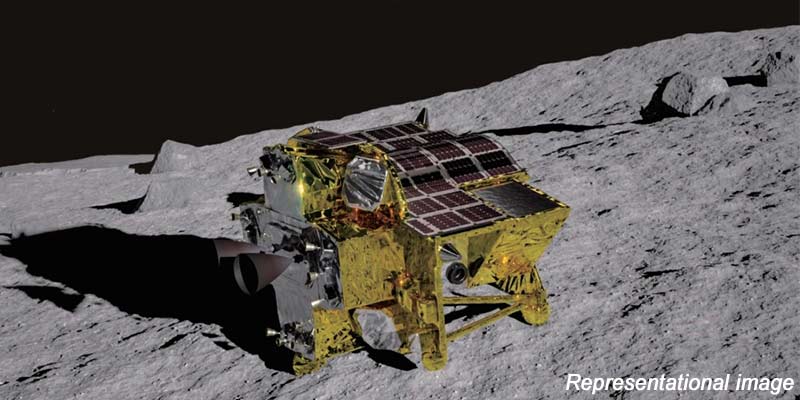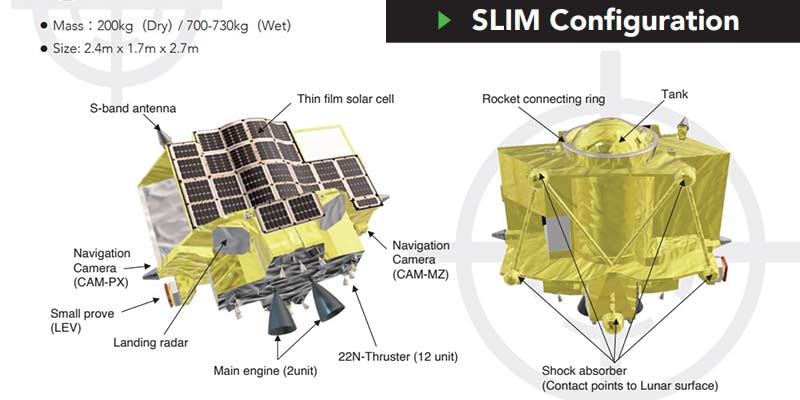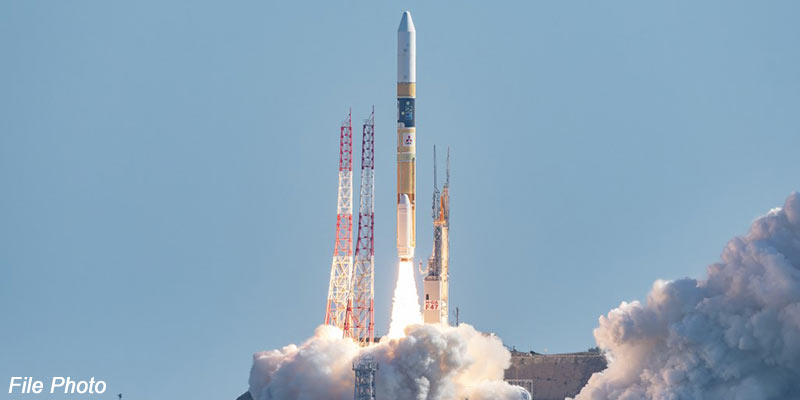- World
- Jan 20
Japan’s SLIM makes historic lunar landing
• Japan became the fifth country in history to reach the Moon when one of its uncrewed spacecraft successfully made a soft-landing on the lunar surface on January 20.
• Japan follows the United States, the Soviet Union, China and India in reaching the Moon.
• The Japan Aerospace Exploration Agency (JAXA) said its Smart Lander for Investigating Moon (SLIM) landed on the Moon’s surface, but its solar panels were not able to generate electricity, possibly because they are angled wrong.
• The SLIM was nicknamed as the “Moon Sniper”.
• SLIM was launched on Japan’s flagship H-IIA rocket in September from the southern island of Tanegashima and has taken a fuel-efficient four-month journey to the Moon.
• A key objective of the mission was to demonstrate pin-point landing technique and obstacle detection technique.
• SLIM weighed 700 kg at launch, less than half of India’s Chandrayaan-3.
• As the probe descended onto the surface, it was designed to recognise where it was flying by matching its camera’s images with existing satellite photos of the Moon.
The importance of precision landing
• The officials believe that the SLIM achieved its goal of a high-precision landing, though they said they will need more time to confirm whether the lander achieved the goal of landing within 100 meters of its target site.
• The project was the fruit of two decades of work on precision technology by JAXA.
• SLIM was designed to land within 100 metres of its target, versus the conventional accuracy of several kilometres for lunar landers.
• As the probe descends onto the lunar surface, it recognises where it is flying by matching its camera’s images with existing satellite photos of the Moon.
• This “vision-based navigation” enables a precise touchdown.
• The precision landing technology will become a powerful tool in future exploration of hilly moon poles — seen as a potential source of oxygen, fuel and water — and boosts a lunar lander’s chance of survival by helping it select the best location for solar power generation
• Shock absorbers make contact with the lunar surface in what JAXA calls a new “two-step landing” method — the rear parts touch the ground first, then the entire body gently collapses forward and stabilizes.
• On landing, SLIM successfully deployed two mini-probes LEV-1 and LEV-2 — a hopping vehicle as big as a microwave oven and a baseball-sized wheeled rover — that would have taken pictures of the spacecraft and were slowly sending them to the Earth.
• LEV-1, equipped with an antenna and a camera, is tasked with recording SLIM’s landing. LEV-2, is a ball-shaped rover equipped with two cameras, developed by JAXA together with Sony, toymaker Tomy and Doshisha University.
Japan enters space race
• Japan is increasingly looking to play a bigger role in space.
• The Japanese space agency has recently faced multiple setbacks in rocket development, including the launch failure in March 2023 of its new flagship rocket H3 that was meant to match cost-competitiveness against commercial rocket providers like SpaceX.
• The failure caused widespread delays in Japan’s space missions, including SLIM and a joint lunar exploration with India.
• Three lunar missions by Japanese startup ispace, Russia’s space agency and American company Astrobotic have failed in the past year.
• Japan hopes to regain confidence in its space technology after a number of failures.
• JAXA has a track record with difficult landings. Its Hayabusa2 spacecraft, launched in 2014, touched down twice on the 900-meter-long asteroid Ryugu, collecting samples that were returned to Earth.
• A successful pinpoint landing by SLIM, especially on the Moon, would raise Japan’s profile in the global space technology race.
• Japan is home to several private-sector space startups and the JAXA aims to send an astronaut to the Moon as part of NASA’s Artemis programme in the next few years.
Upcoming Moon missions
• A number of lunar landers will be headed to the Moon this year.
• US startup Intuitive Machines aims to launch its IM-1 lander in mid-February. China plans to send its Chang’e-6 spacecraft to the far side of the Moon in the first half of 2024 to retrieve samples from an ancient basin. Tokyo-based ispace has said it would launch its second moon mission this year. NASA plans the launch of its lunar polar exploration rover VIPER in November. The US space agency has announced fresh delays to its Artemis moon programme, scheduling for 2026 its first astronaut lunar landing in half a century.
Manorama Yearbook app is now available on Google Play Store and iOS App Store



